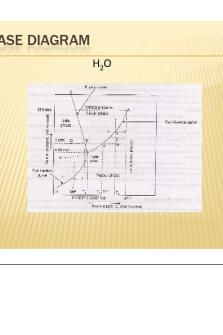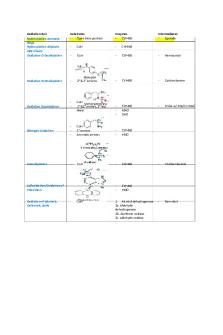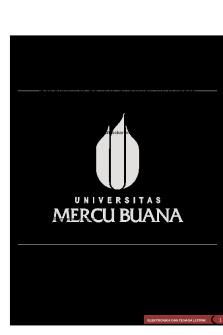Paraffin as Phase Change Material PDF

| Title | Paraffin as Phase Change Material |
|---|---|
| Author | Arefeh Poormalek |
| Pages | 23 |
| File Size | 508.1 KB |
| File Type | |
| Total Downloads | 23 |
| Total Views | 120 |
Summary
We are IntechOpen, the world’s leading publisher of Open Access books Built by scientists, for scientists 4,900 Open access books available 123,000 International authors and editors 140M Downloads Our authors are among the 154 Countries delivered to TOP 1% most cited scientists 12.2% Contributors fr...
Description
We are IntechOpen, the world’s leading publisher of Open Access books Built by scientists, for scientists
4,900
123,000
140M
Open access books available
International authors and editors
Downloads
Our authors are among the
154
TOP 1%
12.2%
Countries delivered to
most cited scientists
Contributors from top 500 universities
Selection of our books indexed in the Book Citation Index in Web of Science™ Core Collection (BKCI)
Interested in publishing with us? Contact [email protected] Numbers displayed above are based on latest data collected. For more information visit www.intechopen.com
Chapter
Paraffin as Phase Change Material Amir Reza Vakhshouri
Abstract Nowadays, numerous problems, including the environmental problem caused by fossil fuels, have led to greater attention to the optimal use of energy and the development of renewable energy. One of the most important parts of using energy efficiently is storing it. Among the many ways introduced for energy storage, thermal energy storage, including latent heat, is among the most interesting. This storage is done with materials called phase change materials (PCMs). These materials store the energy in the form of latent heat at constant temperature during the phase transition, discussed in this chapter, and release the same stored energy in the crystallization process. These materials are mainly classified into three categories: organic, inorganic, and eutectics. Today, these materials are widely used with different properties in a variety of fields. Paraffin is one of the most important organic PCMs due to its numerous advantages that will be discussed in the following sections. From the methods of using paraffinic PCMs, two main methods, encapsulation and shape-stable PCMs, are discussed in detail. On the whole, this chapter of the book attempts to briefly discuss paraffins and their unique role in thermal energy storage systems as phase change materials. Keywords: phase change materials, paraffin, encapsulations, shape-stable PCMs, thermal conductivity
1. Introduction There may not be a precise background to the first discovery and application of phase change materials (PCMs). Perhaps, from the earliest days where human has acquired the intellect, he has realized the existence of these substances or, maybe, has used them without recognizing their nature. Throughout science and technology evolution, more precisely, since the heat capacity of materials and sensible or latent heats have been known, their ability to store and release thermal energy has also been considered. However, A. T. Waterman submitted the first report of discovery in the early 1900s. In recent years, scientists have paid particular attention to these materials, and their commercialization began from those years. Perhaps the main reason for this attention was the problems caused by energy mismanagement and improper use of it. Today, inadequate energy management, especially fossil fuels, has caused many environmental and economic problems. Therefore, the necessity of efficient energy demand as well as development of renewable energies and energy storage systems is highly significant. One of the important topics in this field is the design of special energy storage equipment to other types. Energy storage not only reduces the discrepancy between energy supply and demand but also indirectly improves the performance of energy generation
1
Paraffin - An Overview
systems as well as plays a vital role in saving of energy by converting it into other reliable forms. Hence, this matter saves high-quality fuels and reduces energy wastes [1–3].
2. Phase change materials: an overview Energy storage is one of the important parts of renewable energies. Energy can be stored in several ways such as mechanical (e.g., compressed air, flywheel, etc.), electrical (e.g., double-layer capacitors), electrochemical (e.g., batteries), chemical (e.g., fuels), and thermal energy storages [4]. Among several methods of energy storage, thermal energy storage (TES) is very crucial due to its advantages. TES is accomplished by changing the internal energy of materials, such as sensible heat, chemical heat, latent heat, or a combination of them. In sensible heat storage (SHS) systems, heat can be stored by increasing the temperature of a material. Hence, this system exploits both the temperature changes and the heat capacity of the material to store energy. The amount of heat stored in this system depends on the specific heat, temperature differences, and amount of material; thus it requires a large amount of materials, whereas Latent heat storage (LHS) is generally based on the amount of heat absorbed or released during the phase transformation of a material. Lastly, In the chemical heat storage (CHS), heat is stored by enthalpy change of a chemical reaction. Among the aforementioned heat storage systems, the LHS is particularly noteworthy. One of the special reasons is its ability to store large amount of energy at an isothermal process [5–7]. 2.1 Phase change materials as thermal energy storage Any high-performance LHS system should contain at least one of the following terms: • Appropriate PCM with optimum melting temperature range • Desirable and sufficient surface area proportional to the amount of heat exchange • Optimal capacity compatible with PCM Phase change materials perform energy storage in LHS method. In this case, a material during the phase change absorbs thermal energy from surrounding to change its state, and in the reverse process, the stored energy is released to the surrounding. PCMs initially behave likewise to other conventional materials as the temperature increases, but energy is absorbed when the material receives heat at higher temperatures and close to the phase transformation. Unlike conventional materials, in PCMs absorption or release of thermal energy is performed at a constant temperature. A PCM normally absorbs and releases thermal energy 5–14 times more than other storage materials such as water or rock [8, 9]. PCMs can store thermal energy in one of the following phase transformation methods: solid-solid, solid-liquid, solid-gas, and liquid-gas. In the solid-solid phase change, a certain solid material absorbs heat by changing a crystalline, semicrystalline, or amorphous structure to another solid structure and vice versa [10]. This type of phase change, usually called phase transitions, generally has less latent heat 2
Paraffin as Phase Change Material DOI: http://dx.doi.org/10.5772/intechopen.90487
and smaller volume change comparing to the other types. Recently, this type of PCM has been used in nonvolatile memories [11]. Solid-liquid phase change is a common type of commercial PCMs. This type of PCM absorbs thermal energy to change its crystalline molecular arrangement to a disordered one when the temperature reaches the melting point. Unlike solid-solid, solid-liquid PCMs contain higher latent heat and sensible volumetric change. Solidgas and liquid-gas phase changes contain higher latent heat, but their phase changes are associated with large volumetric changes, which cause many problems in TES systems [8]. Although the latent heat of solid-liquid is less than liquid-gas, their volumetric change is much lower (about 10% or less). Therefore, employing PCMs based on solid-liquid phase change in TES systems would be more economically feasible. The overall classification of energy storage systems as well as phase change materials is given in Figure 1. 2.2 Classification of phase change materials As mentioned in the previous section, despite the high thermal energy absorption capacity, PCMs in liquid-gas and solid-gas transitions have extremely high volume changes. On the other hand, solid-solid PCMs also have a lower thermal energy storage capacity. Therefore, the abovementioned PCMs, with the exception of specific cases, have not received much attention to commercialization. Currently, the most common type of transition that has been mass-marketed is solid-liquid PCMs. The classification of phase change materials is schematically given in Figure 1. Solid-liquid PCMs are generally classified as three general organics, inorganic, and eutectics [12, 13]. However, in some references they are classified into two major organics and inorganics. 2.2.1 Inorganic PCMs Inorganic PCMs mainly have high capacity for thermal energy storage (about twice as much as organic PCMs) as well as have higher thermal conductivity. They are often classified as salt hydrates and metals. Salt hydrates are the most important group of inorganic PCMs, which is widely employed for the latent heat energy storage systems. Salt hydrates are described as a mixture of inorganic salts and water (AB × nH2O). The phase change in salt hydrates actually involves the loss of all or plenty of their water, which is roughly equivalent to the thermodynamic process of melting in other materials. MN . n H 2 O → MN . m H 2 O + (n − m) H 2 O
(1)
MN . n H 2 O → MN + n H 2 O
(2)
At the phase transition, the hydrate crystals are subdivided into anhydrous (or less aqueous) salt and water. Although salt hydrates have several advantages, some deficiencies make restrictions in their application. One of these problems is incongruent melting behavior of salt hydrates. In this problem the released water from dehydration process is not sufficient for the complete dissolution of the salts. In this case, the salts precipitate and as a result phase separation occurs. In order to prevent this problem, an additional material such as thickener agent is added to salt hydrates. Another major problem with salt hydrates is the supercooling phenomenon. In this phenomenon, when crystallization process occurs, the nucleus 3
Paraffin - An Overview
Figure 1. Overview of energy storage and classification of phase change materials.
formation is delayed; therefore, even at temperatures below freezing, the material remains liquid [7, 11, 14]. Overall, the most attractive properties of salt hydrate are (i) high alloy latent temperature, (ii) relatively high thermal conductivity (almost two to five times more than paraffin), and (iii) small volume changes in melting. They are also very low emitting and toxic, adaptable to plastic packaging, and cheap enough to use [15]. Metals are another part of the inorganic PCMs. Perhaps the most prominent advantages of metals are their high thermal conductivity and high mechanical 4
Paraffin as Phase Change Material DOI: http://dx.doi.org/10.5772/intechopen.90487
properties. Metals are available over a wide range of melting temperatures. They are also used as high-temperature PCMs. Some metals such as indium, cesium, gallium, etc. are used for low-temperature PCMs, while others such as Zn, Mg, Al, etc. are used for high temperatures. Some metal alloys with high melting points (in the range of 400–1000°C) have been used for extremely high temperature systems. These metal alloys as high-temperature PCMs can be used in the field of solar power systems [16, 17]. They can also be used in industries that require temperature regulation in furnaces or reactors with high operating temperatures. 2.2.2 Organic PCMs Perhaps the most important fragment is the organic PCMs. Organic PCMs show no change in performance or structure (e.g., phase separation) over numerous phase change cycles. In addition, supercooling phenomena cannot be observed in organic PCMs. The classification of organic PCMs is unique. This division is mainly based on their application contexts. In general, they are classified into two major paraffin and non-paraffin sections. Paraffins are the most common PCMs. Since this book is about paraffin, to avoid duplication, this section will briefly discuss the chemistry (structure and properties) of paraffin, but their ability as phase change materials will be reviewed in detail. Non-paraffinic organic PCMs are known to be the most widely used families. In addition to their different properties compared to paraffins, they have very similar properties to each other. Researchers have used various types of ether, fatty acid, alcohol, and glycol as thermal energy storage materials. These materials are generally flammable and less resistant to oxidation [18–20]. Although non-paraffin organic PCMs have high latent heat capacity, they have weaknesses such as flammability, low thermal conductivity, low combustion temperatures, and transient toxicity. The most important non-paraffinic PCMs are fatty acids, glycols, polyalcohols, and sugar alcohols. Fatty acids [CH3(CH2)2nCOOH] also have high latent heat. They can be used in combination with paraffin. Fatty acids exhibit high stability to deformation and phase separations for many cycles and also crystallize without supercooling. Their main disadvantages are their costs. They are 2–2.5 times more expensive than technical grade paraffins. Unlike paraffins, fatty acids are of animal or plant origin. Their properties are similar to those of paraffins, but the melting process is slower. On the other hand, they are moderately corrosive as well as generally odorous [21]. 2.2.3 Eutectics A eutectic contains at least two types of phase change materials. Eutectics have exceptional properties. In eutectics, the melting-solidification temperatures are generally lower than the constituents and do not separate into the components through the phase change. Therefore, phase separation and supercooling phenomena are not observed in these materials. Eutectics typically have a high thermal cycle than salt hydrates. Inorganicinorganic eutectics are the most common type of them. However, in recent studies, organic-inorganic and organic-organic varieties have received more attention. The major problem of eutectics is their commercialization. Their cost is usually two to three times higher than commercial PCMs [22, 23]. Some of the above PCMs and their thermal properties, which are competitive with paraffins in terms of latent heat capacity, are summarized in Table 1. 5
Inorganic salt hydrates
Non-paraffinic organic PCMs
Fatty acids
Polyalcohols
Others
Materials
Melting point (°C)
Latent heat (kJ/kg)
Density* (kg/m3)
LiClO3·3H2O
8
253
1720
K2HPO4·6H2O
14
109
Mn(NO3)2·6H2O
25.8
126
1600
CaCl2·6H2O
29.8
191
1802
Na2CO3·10H2O
32–34
246–267
Na2SO4·10H2O
32.4
248, 254
1490
0.544
[14, 26]
Na2HPO4·12H2O
34–35
280
1522
0.514
[15, 26]
FeCl3·6H2O
36–37
200, 226
1820
Na2S2O3·5H2O
48–49
200, 220
1600
1.46
[15, 26]
CH3COONa·3H2O
58
226, 265
1450
1.97
[15, 26]
Formic acid
8.3
247
1220
—
[1, 25]
n-Octanoic acid
16
149
910
0.148
[21, 27]
Lauric acid
43.6
184.4
867
Palmitic acid
61.3
198
989
0.162
[21, 27]
Stearic acid
66.8
259
965
0.172
[21, 25]
Glycerin
18
199
1250
0.285
[1, 25]
PEG E600
22
127.2
1126
0.189
[27]
PEG E6000
66
190
1212
Xylitol
95
236
1520
0.40
[28]
Erythritol
119
338
1361
0.38
[28]
2-Pentadecanone
39
241
[1, 25]
4-Heptadekanon
41
197
[1, 25]
D-Lactic acid
52–54
126, 185
Thermal conductivity (W/mK)**
Ref. [24, 25] [24] [14, 25]
1.08
[24, 25] [14, 24]
1220
[25, 26]
[21, 25]
[27]
[1, 25]
Paraffin - An Overview
6
Type of PCMs
Eutectics
O-O, O-I, I-I ***
Metals
Materials
Melting point (°C)
Latent heat (kJ/kg)
Density* (kg/m3)
CaCl2·6H2O + MgCl2·6H2O
25
127
1590
Mg(NO3)2·6H2O + MgCl2·6H2O
59
144
1630
Trimethylolethane + urea
29.8
218
[21]
CH3COONa·3H2O + Urea (60:40)
31
226
[27]
Mg-Zn (72:28)
342
155
2850
Al-Mg-Zn (60:34:6)
450
329
2380
[16, 17]
Al-Cu (82:18)
550
318
3170
[16, 17]
Al-Si (87.8:12.2)
580
499
2620
[16, 17]
*
At 20°C. Just above melting point (liquid phase). *** Inorganic-inorganic (I-I), organic-inorganic (O-I), and organic-organic (O-O). **
Table 1. Thermophysical properties of some common PCMs with high latent heat.
Thermal conductivity (W/mK)**
Ref. [27]
0.51
67
[27]
[16, 17]
Paraffin as Phase Change Material DOI: http://dx.doi.org/10.5772/intechopen.90487
7 Type of PCMs
Paraffin - An Overview
3. Paraffin-based phase change materials Paraffin is usually a mixture of straight-chain n-alkanes with the general formula CH3-(CH2)n-CH3. However, in some cases, paraffin is used as another name for alkanes. Gulfam R. et al. in their article have classified paraffins based on the number of carbon atoms as well as their physical states. According to this classification, at room temperature, 1–4 numbers of carbons refer to pure alkanes in a gas Melting point (°C)
Latent heat (kJ/kg)
Density* (kg/m3)
Thermal conductivity** (W/mK)
n-Tetradecane (C14)
6
228–230
763
0.14
n-Pentadecane (C15)
10
205
770
0.2
n-Hexadecane (C16)
18
237
770
0.2
n-Heptadecane (C17)
22
213
760
0145
n-Octadecane (C18)
28
245
865
0.148
n-Nonadecane (C19)
32
222
830
0.22
n-Eicosane (C20)
37
246
n-Henicosane (C21)
40
200, 213
778
n-Docosane (C22)
44.5
249
880
0.2
n-Tricosane (C23)
47.5
232
n-Tetracosane (C24)
52
255
n-Pentacosane (C25)
54
238
n-Hexacosane (...
Similar Free PDFs

Paraffin as Phase Change Material
- 23 Pages

EMULSI PARAFFIN
- 35 Pages

WS F Phase Change Problems Worksheet
- 10 Pages

09 Ind AS 102 - ICAI Study Material
- 57 Pages

Phase Rule
- 21 Pages

Phase Diagram
- 4 Pages

Phase 1 and phase 2 reactions
- 8 Pages

TRAFO 1 PHASE DAN 3 PHASE
- 13 Pages
Popular Institutions
- Tinajero National High School - Annex
- Politeknik Caltex Riau
- Yokohama City University
- SGT University
- University of Al-Qadisiyah
- Divine Word College of Vigan
- Techniek College Rotterdam
- Universidade de Santiago
- Universiti Teknologi MARA Cawangan Johor Kampus Pasir Gudang
- Poltekkes Kemenkes Yogyakarta
- Baguio City National High School
- Colegio san marcos
- preparatoria uno
- Centro de Bachillerato Tecnológico Industrial y de Servicios No. 107
- Dalian Maritime University
- Quang Trung Secondary School
- Colegio Tecnológico en Informática
- Corporación Regional de Educación Superior
- Grupo CEDVA
- Dar Al Uloom University
- Centro de Estudios Preuniversitarios de la Universidad Nacional de Ingeniería
- 上智大学
- Aakash International School, Nuna Majara
- San Felipe Neri Catholic School
- Kang Chiao International School - New Taipei City
- Misamis Occidental National High School
- Institución Educativa Escuela Normal Juan Ladrilleros
- Kolehiyo ng Pantukan
- Batanes State College
- Instituto Continental
- Sekolah Menengah Kejuruan Kesehatan Kaltara (Tarakan)
- Colegio de La Inmaculada Concepcion - Cebu







